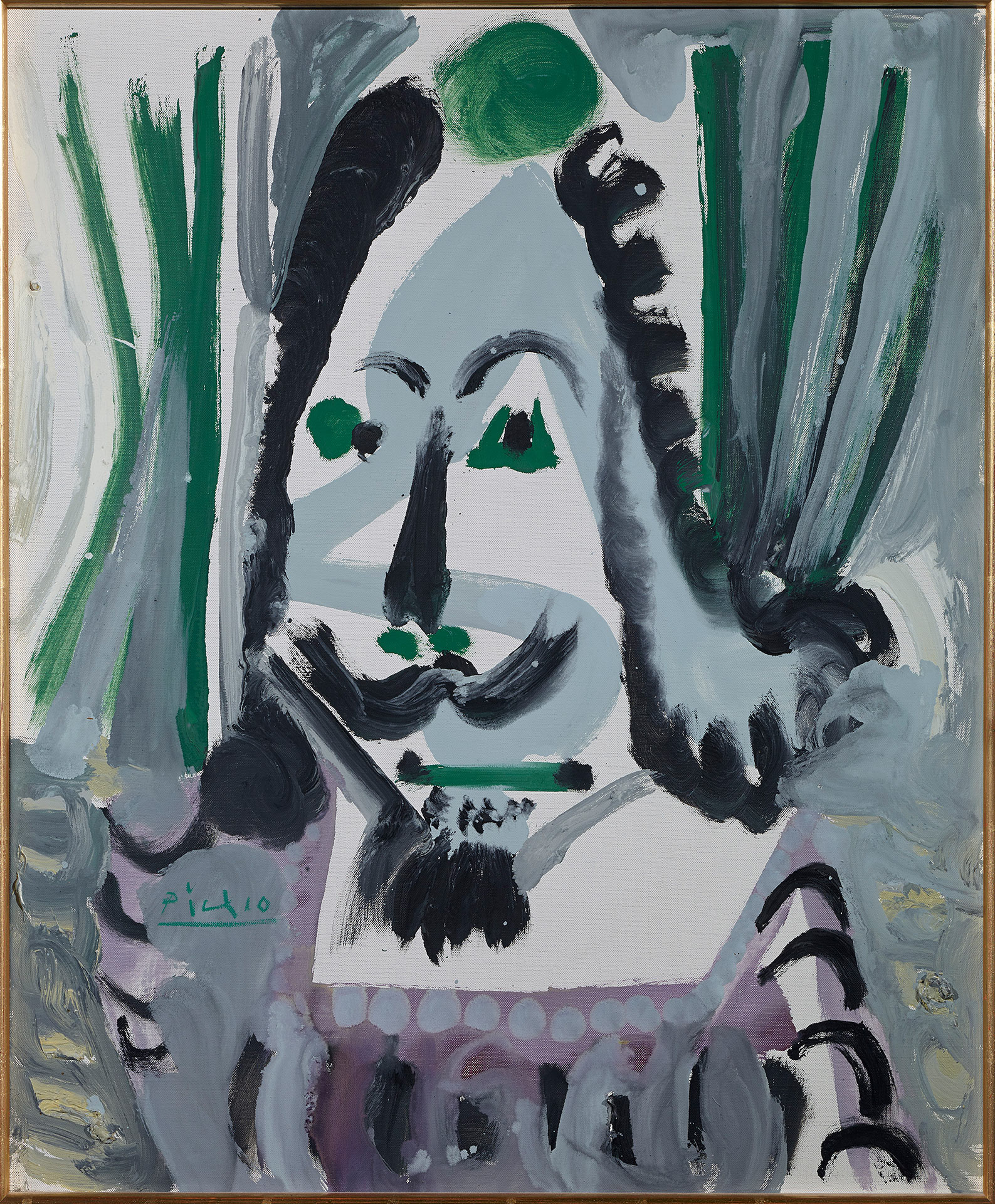
Pablo Ruiz Picasso (Málaga, 1881 – Mougins, France, 1973)
Bust of a Gentleman III
1967
WORK INFORMATION
Oil on canvas, 73 x 60 cm
OTHER INFORMATION
Signed at the bottom left: "Picasso". Inscription on the reverse: "9.6.67-III"
Picasso turned 85 on 25 October 1966. Despite his advanced age, his output was abundant in the preceding years and even the ones that followed. After Guernica (1937), he frequently signed and dated his works on the back of the canvas, indicating the day or days and month in which he had made them. His works were often finished in a single day, like this one from 9 June 1967, and many featured a single figure at less than full length. However, the constant variations in form and colour testify to the boundless creativity and powers of invention of the Málaga-born painter. In addition to numerous images of women, often inspired by his wife, Jacqueline Roque, and the recurring motif of the painter and his model, manly busts with historical 17th-century overtones were constant protagonists.
The latter type is exemplified in this figure, which Zervos identifies as a musketeer, although it lacks the figure-eight or hourglass-shaped hat that usually accompanies such busts. The hair parted in the middle and falling to the shoulders, the curling moustache and goatee, and the shape of the neckline and circular ornaments on the suit all define this man as a 17th-century character.
In a departure from his ordinary procedure of using thick black strokes to outline the forms and areas of colour, here Picasso reverts to a style he had used a decade earlier, simply applying broad, singular brushstrokes—barely one hundred in total. His keen intuition and extensive experience allowed him to work swiftly and make no corrections. Compared to the Cubist vocabulary that had dominated Picasso's production since the early 1910s—with as many qualifications as we wish to make—this bust is fairly naturalistic. However, it is interesting to note the manner of depicting the eyes, distinguished not only by the use of two tones (green and black) but also, and most importantly, by the different shape and position of each. The horizontal slash representing the mouth and the two daubs that indicate the nostrils are less remarkable. Yet the thick stroke across the face, broad on the forehead and zigzagging down to the mouth, is also a consequence—albeit a subordinate one—of his double frontal-lateral vision of a Cubist face. The way he painted the hair on the right side, so unlike the left, is not unusual.
That same year Picasso used the range of colours found in this work on several occasions, though in different proportions and positions. In addition to the black for the eyebrows, eyes, nose, hair and a few details of the suit, the soft greyish-blue, the dark but not dismal green, and a lilac pink hue configure a work with a well-balanced palette whose violence and energy is attenuated by the white zones. [José Manuel Cruz Valdovinos]

